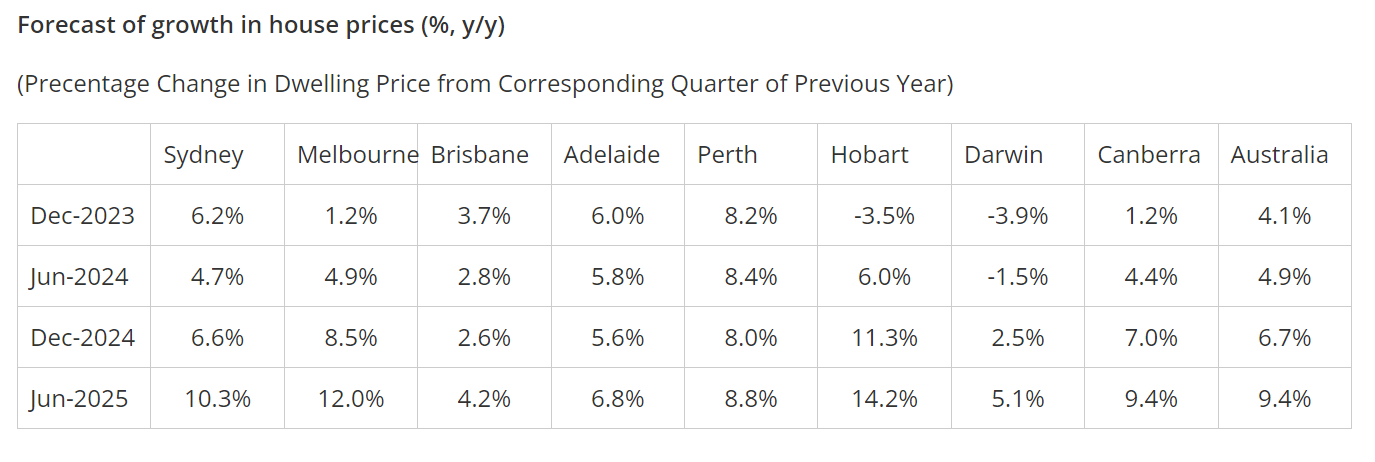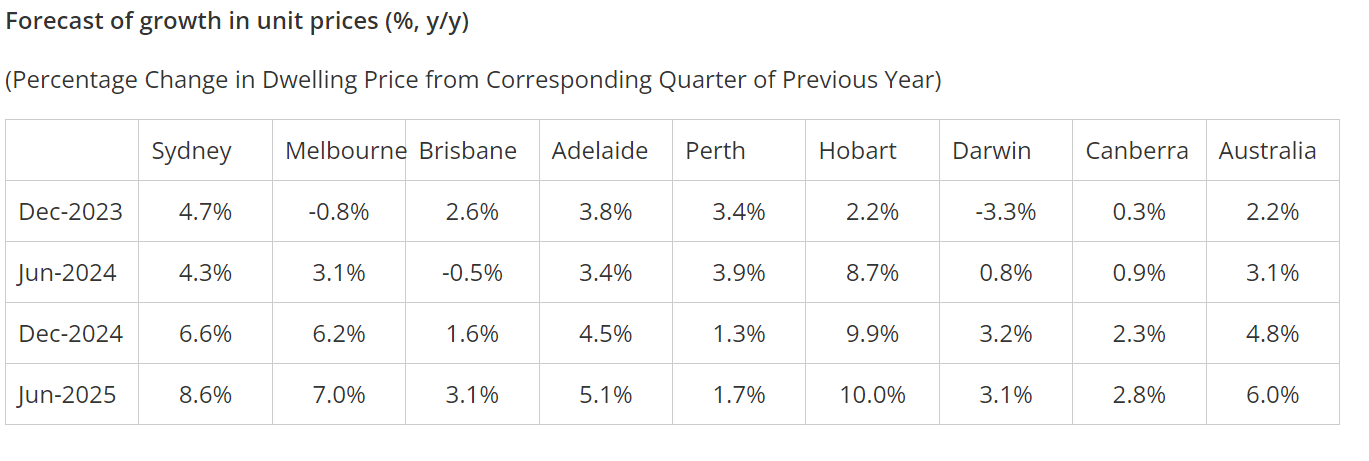

Australian house prices will increase by 4.9% over the next nine months, then spike by 9.4% in the year to June 2025, according to a new KPMG report.
KPMG’s new property report on Australia’s capital cities found that apartment prices across the country will lift by average 3.1% by June, followed by a 6% rise in the next 12 months.
Key regional differences are expected, however, with Perth houses rising the highest, by 8.4%, by the end of the next financial year, but with Hobart overtaking other cities in FY25 with a 14.2% surge.

Hobart is also tipped to outperform other capital cities when it comes to unit prices, with increases of 8.7% and 10%, respectively, over the next two years, followed by Sydney, Melbourne, and Adelaide.
 The KPMG report detailed the range of push and pull factors impacting property prices, but with limited supply and high demand ultimately outweighing interest rates.
The KPMG report detailed the range of push and pull factors impacting property prices, but with limited supply and high demand ultimately outweighing interest rates.
“Despite high interest rates, constrained supply will likely dominate the factors influencing property prices in the short term and result in continued price gains in most markets during FY24,” said Brendan Rynne (pictured above), KPMG chief economist.
“House and unit prices will then accelerate further in the next financial year as dwelling supply continues to be limited, due to scarcity of available land, falling levels of approvals, and slower or more costly construction activity.”
The supply issue when combined with many other factors are tipped to push asset prices up.
These factors include higher demand due to increased migration, anticipated rate cuts moving into FY25 and potentially relaxed lending conditions, high rental costs pushing renters to consider buying instead, barriers to developers building new homes, foreign investor demand picking up again, and the longer post-pandemic demand for more space as people continue to work from home.
But some factors are pushing the other way, the main one being mortgage stress.
“First-time buyers now need to use around half their earnings on mortgage payments – a significant rise from a third just three years ago,” Rynne said.
“We estimate around $350 billion of mortgages, or half of all fixed rate credit will expire this year – covering 880,000 Australian households. The remaining 38% of fixed-rate credit, which includes about 450,000 loan facilities, will expire in 2024 and beyond.”
This could potentially see some homeowners who were previously locked in low rates to be unable to pay nor refinance to a lower and competitive rate.
“But on balance the factors pushing prices up will more than counter those restraining them,” Rynne said. “Market dynamics vary across different cities so there will be considerable regional variations.”
According to the report, those regional price variations have been significant over the past three years.
From June 2020 to June 2023, Adelaide house prices increased 40%, outperforming the national average and with no sign of having been impacted by the contractionary monetary policy cycle. By contrast, Sydney and Melbourne prices slipped -1.3% and -1.4% over the year to June 2023, following sharp rises during the pandemic.
Other factors have changed from the height of the pandemic, KPMG noted.
The Home Builder stimulus resulted in a surge of housing approvals and subsequent completions. But shrinking approvals, and steadily increasing building material costs are now putting the squeeze on housing supply. Migration, too, which
Migration too, which collapsed during the pandemic, will spike by more than 400,000 this year, while foreign investment is slowly but steadily recovering.
The KPMG report outlined that surging rental costs can considerably push up dwelling prices, as more renters try for homeownership.
“Based on our projections for new dwelling completions and the Treasury’s population forecasts, we estimate that annual rent growth will be 5.6% over the next two years – which is 2.5% higher than the long-term average of 3.1%,” Rynne said.
“We assess that dwelling completions would have to be around 76% higher than is currently forecast for those rental costs to be pulled back to normal levels. Either that or population growth from migration would have to be brought down to considerably lower levels than at present – which would mean short-term costs over-riding long-term economic benefits.”
Get the hottest and freshest mortgage news delivered right into your inbox. Subscribe now to our FREE daily newsletter.
